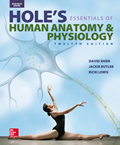1 A) microfilaments and microtubules B) cilia and flagella C) centrioles D) vesicles 2 A) RNA and protein B) DNA C) invaginated cytoplasm D) chromatin 3 A) ribosomes B) lysosomes C) chromosomes D) DNA 4 A) diffusion B) filtration C) osmosis D) endocytosis 5 A) filtration B) osmosis C) exocytosis D) diffusion 6 A) hypertonic B) hypotonic C) isotonic 7 A) sodium B) carbon dioxide C) glucose D) amino acids 8 A) active transport B) filtration C) endocytosis D) facilitated diffusion 9 A) glucose B) water C) sodium D) oxygen 10 A) filtration B) diffusion C) facilitated transport D) pinocytosis 11 A) isotonic B) hypertonic C) hypotonic D) hypoosmotic 12 A) filtration B) facilitated diffusion C) controlled by electrically gated channels D) hormone mediated 13 A) white blood cells remove bacteria from tissue B) fluid is brought into the cell C) substances are released by the cell, using ATP for energy D) receptors determine if a substance will be taken into the cell 14 A) True B) False 15 A) interphase B) metaphase C) prophase D) telophase 16 A) prophase B) metaphase C) anaphase D) telophase 17 A) the chromosomes line up between the centrioles B) the centrioles move toward opposite ends of the cell C) the chromosomes are pulled toward the centrioles D) chromosomes approach the centrioles and nuclear envelopes form 18 A) telophase, anaphase, metaphase, prophase B) prophase, telophase, metaphase, anaphase C) anaphase, prophase, metaphase, telophase D) prophase, metaphase, anaphase, telophase 19 A) maturation B) replication C) hybridization D) differentiation 20 A) hyperplasia B) differentiation C) metastasis D) invasiveness 21 A) cells break off from a cell mass and migrate to different parts of the body B) cells specialize, by turning on some genes and turning off others C) cells no longer know how to divide properly D) membranes let some substances in and not others. 22 A) True B) False 23 A) True B) False 24 A) True B) False 25 A) True B) False 26 A) True B) False 27 A) True B) False 28 A) True B) False 29 A) True B) False 30 A) True B) False 31 A) True B) False 32 A) True B) False





